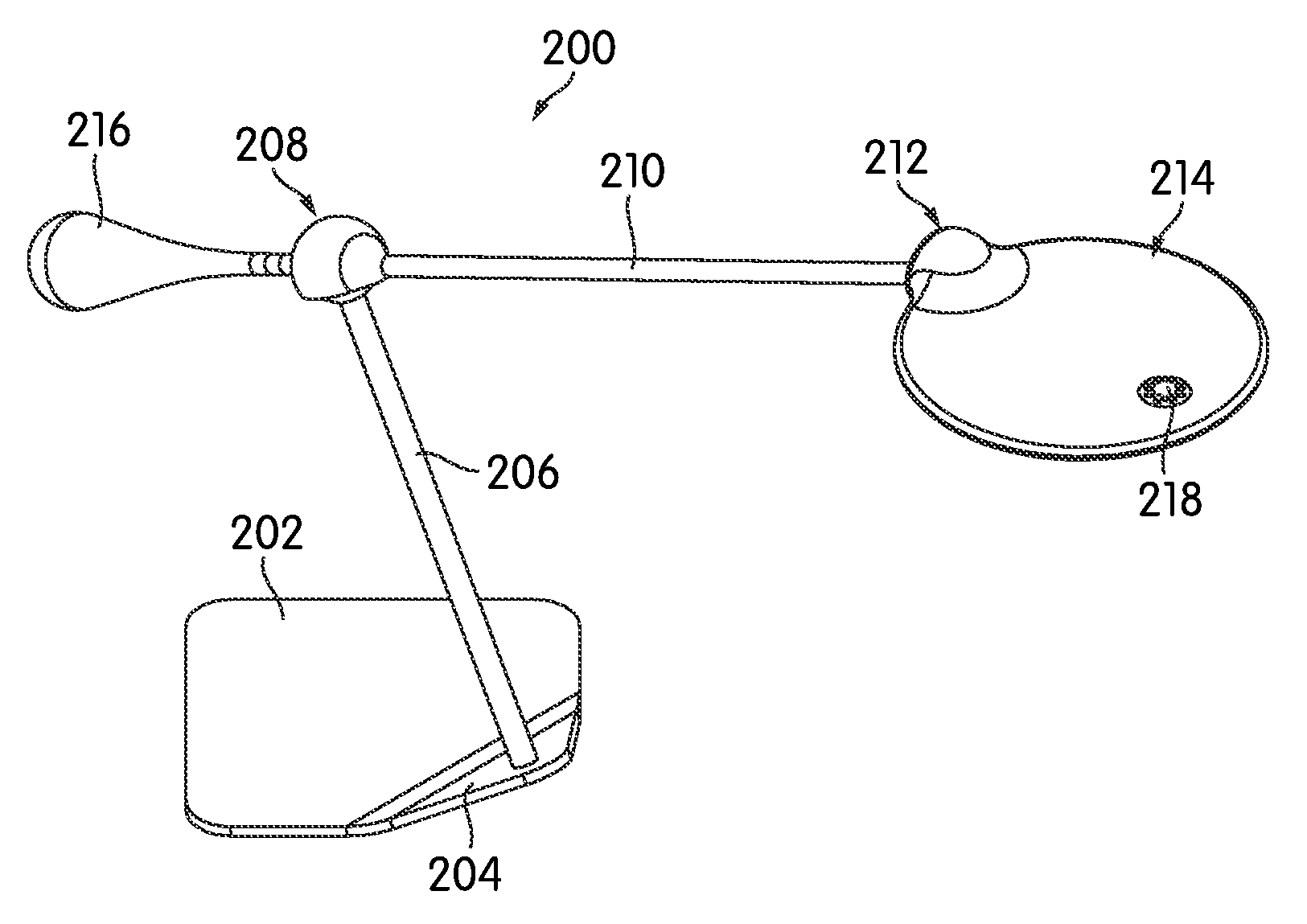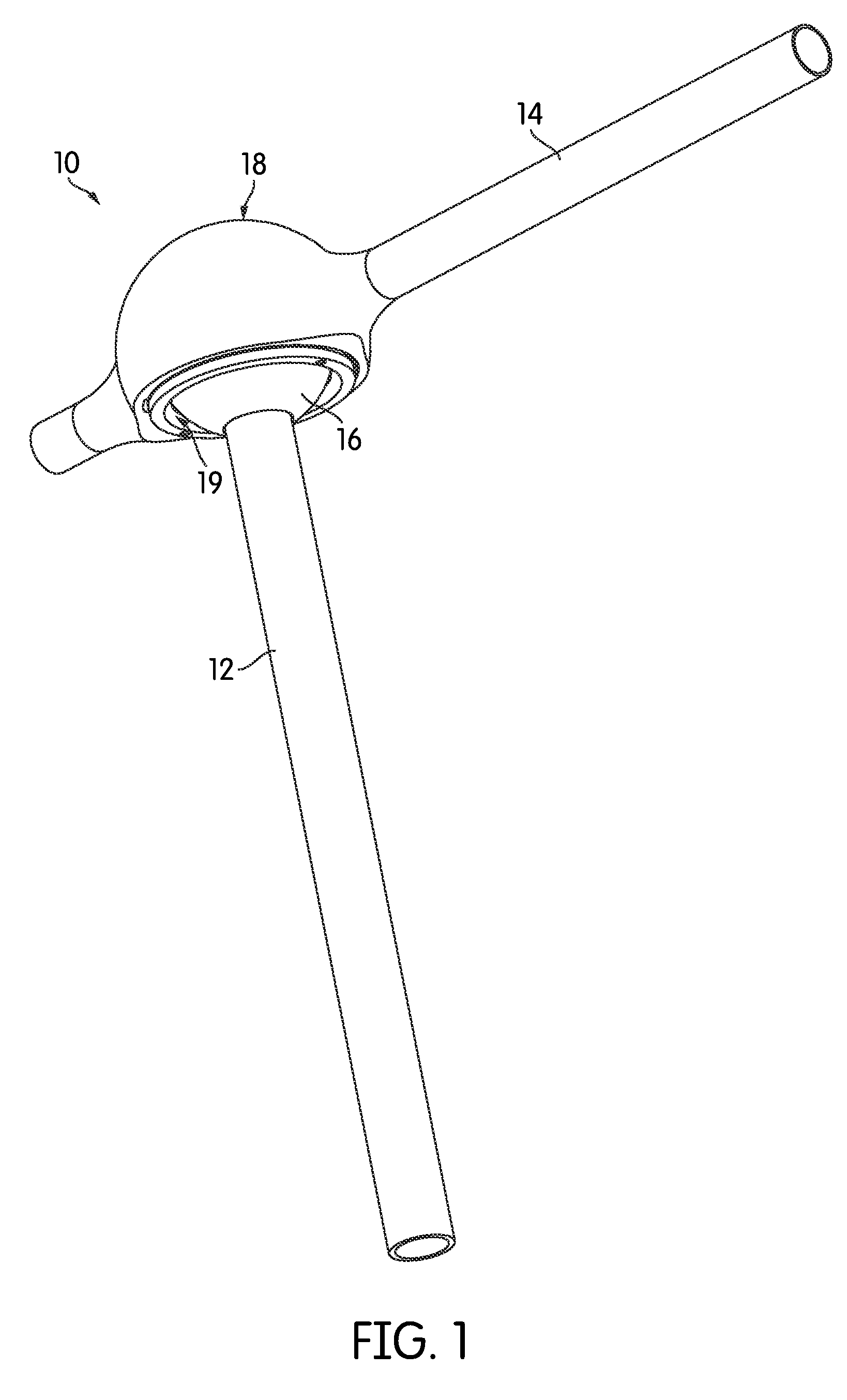Electrically Conductive Ball Joints and Lighting Fixtures using the Joints
- Summary
- Abstract
- Description
- Claims
- Application Information
AI Technical Summary
Benefits of technology
Problems solved by technology
Method used
Image
Examples
Embodiment Construction
[0025]FIG. 1 is a perspective view of a conductive ball joint, generally indicated at 10, according to one embodiment of the invention. As shown, the ball joint 10 joins a first member 12 and a second member 14. More particularly, a ball portion 16 is attached at one end of the first member 12, and the ball portion 16 is received in a socket 18 that forms a part of the second member 14. In the arrangement illustrated in FIG. 1, the second member 14 extends generally orthogonal to the first member 12, although this need not be the case in all embodiments. Generally speaking, the ball joint 10 may be positioned to join the two members 12, 14 at any angle, e.g., end-to-end, orthogonal, or in any other relationship. As will be described below in more detail, the ball joint 10 provides the two members 12, 14 with a full 360° of rotation between them in a plurality of planes. In fact, the two members 12, 14 can be rotated continuously with respect to one another, beyond 360°, as many turn...
PUM
 Login to View More
Login to View More Abstract
Description
Claims
Application Information
 Login to View More
Login to View More - R&D
- Intellectual Property
- Life Sciences
- Materials
- Tech Scout
- Unparalleled Data Quality
- Higher Quality Content
- 60% Fewer Hallucinations
Browse by: Latest US Patents, China's latest patents, Technical Efficacy Thesaurus, Application Domain, Technology Topic, Popular Technical Reports.
© 2025 PatSnap. All rights reserved.Legal|Privacy policy|Modern Slavery Act Transparency Statement|Sitemap|About US| Contact US: help@patsnap.com



